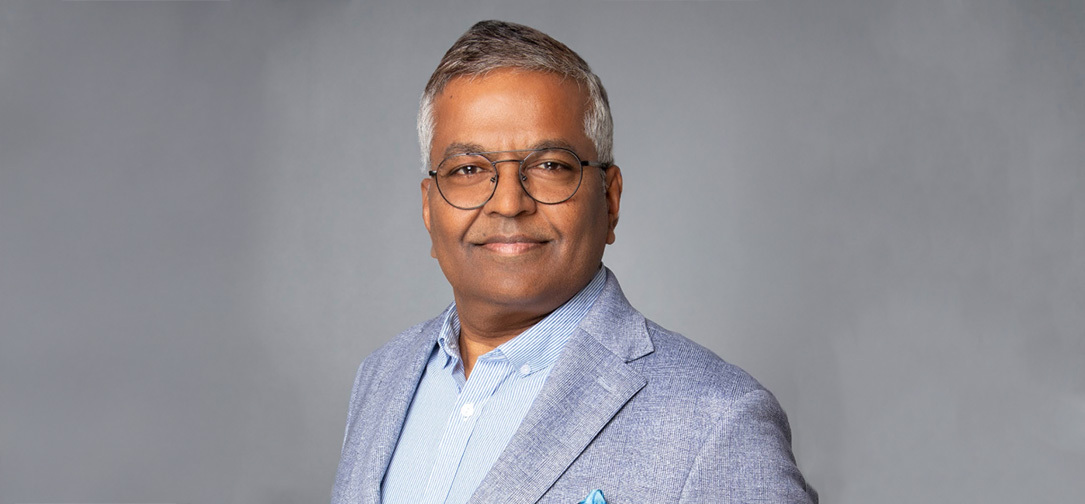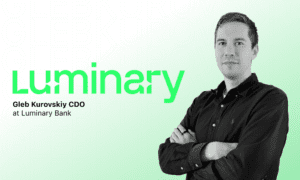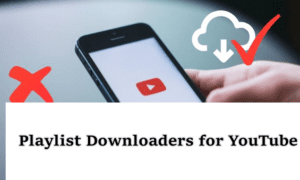Healthcare is undergoing a digital renaissance, where secure, intelligent communication has become the backbone of better patient outcomes. Leading this shift is Krishna Kurapati, CEO of QliqSOFT, whose vision has positioned the company as a trusted partner for healthcare organisations worldwide. From AI-powered patient engagement to secure clinical collaboration, QliqSOFT is transforming how providers connect with patients and each other. In this exclusive TechBullion interview, Krishna discusses his journey as a serial entrepreneur, the innovations driving QliqSOFT’s success, and the company’s mission to make healthcare communication seamless, scalable, and truly patient-centred.
Please tell us more about yourself?
Krishna Krupati is the Chief Executive Officer of QliqSOFT, a leading innovator in digital patient engagement and clinical collaboration. With over a decade of leadership in healthcare technology, Krishna has transformed QliqSOFT into a trusted partner for hospitals, health systems, post-acute care providers, ambulatory centers, and life sciences organizations.
Under his leadership, QliqSOFT has built a secure, cloud-based, HIPAA-compliant platform that redefines how providers, patients, and care teams communicate. He has driven the creation of flagship solutions such as Quincy, an AI-powered, app-less patient engagement platform, and QliqCHAT, a leading clinical collaboration platform.
Krishna has championed innovations that help healthcare organizations automate repetitive tasks, reduce staff burnout, and create more connected, patient-centered care experiences.
A serial entrepreneur with more than two decades of experience, Krishna previously founded and scaled successful startups, including IPCell and Sipera Systems. His proven track record in building high-growth companies continues to shape QliqSOFT’s vision of advancing healthcare through secure, intelligent, and patient-first digital solutions
What is QliqSOFT, and what unique services do you provide?
QliqSOFT is a healthcare communication and patient engagement company with a very clear mission: to help providers, staff, and patients connect securely, efficiently, and in ways that fit naturally into their daily workflows. Our platform unifies secure texting, app-less virtual visits, e-signatures, digital forms, campaigns, and AI-powered chatbots—all built on HIPAA and SOC2 compliant cloud infrastructure.
But what truly differentiates us is the flexibility we give healthcare organizations in how they design and deploy engagement workflows. With Quincy’s low-code/no-code design studios, clients can choose between turnkey design services—where our team rapidly builds workflows for them—or self-design, where their own staff can drag-and-drop forms, reminders, chatbots, or intake processes without writing a single line of code. This dual approach empowers organizations to move at their own speed, whether they want us to deliver a complete solution out of the box or build it themselves in minutes.
That flexibility translates directly into time and cost savings. What used to take months of custom development and high consulting fees can now be done in days, often by a care coordinator or patient engagement manager instead of an IT team. It’s why we’ve seen adoption spread quickly across organizations of every size—from rural clinics to multi-state health systems. At the end of the day, QliqSOFT delivers security, speed, and simplicity, and that’s what healthcare needs most right now.
Looking at the most common misconceptions about secure messaging in healthcare, which do you find most entrenched among providers, and how does QliqSOFT’s approach actively dispel it?
The biggest misconception is that secure messaging is just ‘HIPAA texting.’ In reality, it’s about clinical workflow transformation. Providers often think security slows communication down, but we’ve proven the opposite. With Cloud Pass-Thru™, 2048-bit RSA encryption, we’ve created a system that is both more secure and faster than legacy solutions. Add to that on-call scheduling, escalation routing, Caller-ID masking, and seamless EMR connectivity, and what you get is not just a messaging app—but a mission-critical clinical collaboration platform
In emergency on-call environments where speed and reliability are critical, how does QliqCHAT ensure seamless, HIPAA-compliant communication and improve response times compared to legacy systems like pagers or phone calls?
In emergency on-call settings, speed and accuracy save lives. Legacy pagers and phone trees often mean delays, missed messages, and endless callbacks. QliqCHAT replaces that with a single, HIPAA-compliant platform for secure text, voice, and video—delivering messages instantly, confirming receipt, and escalating if no one responds.
We’ve also eliminated one of the biggest risks: outdated on-call lists. With QliqSOFT, departments manage schedules digitally, independently, so they’re always accurate—no more spreadsheets or clipboards. That ensures the right provider is reached the first time, avoiding dangerous care delays. The result is faster response times, greater accountability, and a safer, smarter alternative to pagers
How does QliqSOFT’s integration of two-way secure texting with virtual visits enhance appointment readiness, reduce no-shows, and streamline patient workflows?
Missed appointments cost health systems billions each year, and the root cause is friction. Patient Portals ask too much, while one-way reminders don’t close the loop. QliqSOFT solves this by combining two-way secure texting with instant, app-less patient engagement. Patients get reminders they can actually reply to, fill out intake forms, e-sign documents, and then launch directly into their visit—all in the same secure thread.
What makes the difference are our nudging functions—automated reminders that not only notify but confirm readiness and prompt patients until they respond. This proactive engagement dramatically reduces no-shows by making sure patients stay on track and show up prepared. The result is smoother workflows for staff, higher appointment adherence, and a better patient experience from start to finish.
Can you share measurable improvements in patient intake efficiency, satisfaction, or appointment adherence that you’ve observed since implementing QliqSOFT’s unified texting and virtual visit model?
Yes, and this is where I draw satisfaction from. Our clients report double-digit reductions in no-shows, faster pre-visit intake completion, and higher patient satisfaction scores. For example, providers using Quincy have seen 22% reduction in staff overtime, 27% more well-child visits, 32% fewer readmissions, and a 58% completion rate for SDoH screenings—numbers that translate directly into both better outcomes and financial performance.
Quincy offers no-code tools for creating personalised digital workflows. How has this flexibility transformed patient engagement compared to traditional portals or manual outreach methods?
With Quincy, a care coordinator doesn’t need IT or developers to launch a workflow. They can drag-and-drop Quick Forms, reminders, or follow-ups into a chatbot in minutes. Compare that to portals, where adoption hovers below 50%. Our clients are engaging patients across multiple languages, with workflows tailored to everything from chronic care to social determinants of health. It’s self-service automation that empowers staff while meeting patients where they are—on their phones.
Providers using Quincy have reported results such as a 22% reduction in staff overtime, 27% more well-child visits, 32% fewer readmissions, and 58% SDoH screening completion. How do these outcomes align with QliqSOFT’s long-term strategic vision?
These results validate our vision. Healthcare is moving toward value-based care, where outcomes matter as much as volume. Our tools don’t just reduce administrative burden—they help close care gaps, improve chronic care management, and address population health needs. Our long-term vision is simple: be the digital front door that makes healthcare bespoke, accessible, efficient, and personalized for every patient.
Quincy supports digital forms, e-signatures, chatbots, secure texting, and virtual visits. How does consolidating these tools into a single platform drive operational efficiency and improve patient experiences?
Fragmentation is healthcare’s silent killer. If a patient gets reminders in one system, fills forms in another, signs documents in a third, and joins telehealth on a fourth, confusion and drop-off are guaranteed. Quincy consolidates all of it. Staff save time toggling between systems, patients experience a single, seamless journey, and IT teams reduce integration headaches and security concerns. This consolidation directly translates into lower costs, improved security, faster adoption, and better patient loyalty.
Looking ahead, how do you see Quincy evolving, through deeper EHR interoperability, AI-powered predictive outreach, or expanded communication channels, to shape the next phase of digital patient engagement?
The future of Quincy lies in predictive and proactive engagement. We’re expanding integrations with EHRs to make workflows bi-directional and context-aware, so the system knows when a patient is due for a screening or at risk of readmission and automatically engages them. AI will play a central role—moving beyond reactive chat to predictive outreach and personalized nudges. And communication won’t be limited to SMS or email; we’re preparing for WhatsApp, voice agents, and agentic flows. In short, Quincy will be the engine driving the next era of patient engagement—intelligent, inclusive, and always secure



































